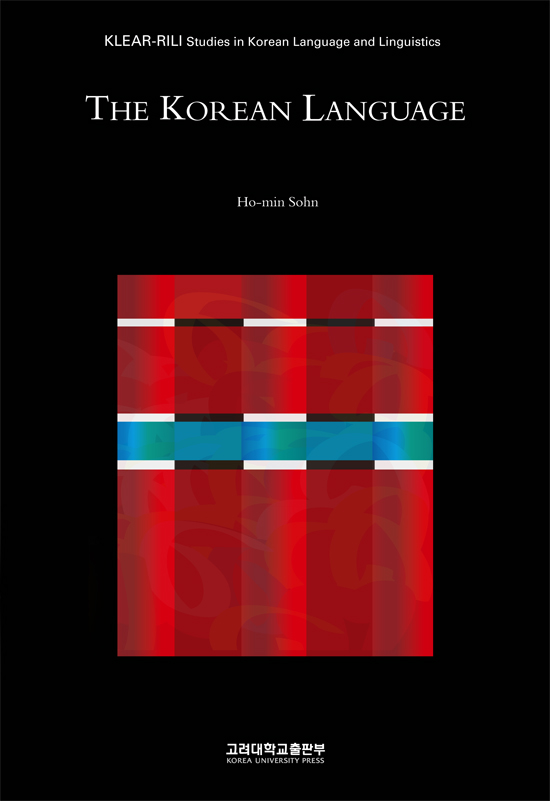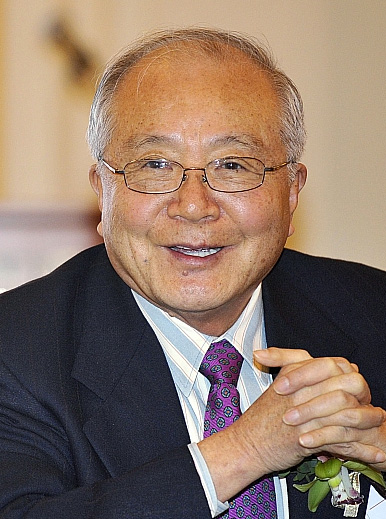이 책은 세계 굴지의 판사인 영국 Cambridge University Press에서 1999년 출간된 책으로서 세계적으로 한국어학 분야를 대표하는 포괄적인 입문서이다. 초판 출간 이후 전 세계적으로 총 2만부 이상이 팔린 베스트셀러로서, 한국어에 대한 핵심적인 사실들을 이론 중립적이고 기술적인 관점에서 제시하며, 그 발화자들, 세계 다른 언어들과의 관계, 역사적 변천, 방언(남한과 북한 간의 차이를 포함하는), 쓰기 체계, 단어들의 구성과 구조, 음향 패턴과 구문 등을드러내 보여준다. 풍부한 예들을 제공하며, 또 매우 친절하고도 자상한 서술방식으로 인하여 독자들이 언어학 이론 또는 한국어 이론에 대한 깊은 지식을 갖지 않아도 읽는 데 어려움이 없다.
[특징: 이 책은 무엇보다도 한국어를 설명하는 데 반드시 필요한 기본 문법개념에 대해 전세계적으로 유일무이하다고 할 만큼 명확하고 평이한 영어 용어와 설명을 제공해 준다. 이 점에서 언어학 전공자는 물론 외국인을 대상으로 한국어를 가르치는 교사들에게 필수불가결한 책이라고 할 수 있다. 그동안 출판사로 직접 주문하거나 또는 Amazon등을 통해야만 구입이 가능하여 높은 가격과 배송비용, 배송시간 지체 등으로 인하여 독자들이 쉽게 접하는데 어려움이 있었다. 그러나 이번에 Korea Edition으로 국내에서 출판됨으로써 세련된 하드커버 양장본을 매우 저렴한 가격과 빠른 배송시간 등의 편리한 조건으로 구입할 수 있게 되었다.]
This book offers a comprehensive introduction to the linguistics of Korean. It presents essential facts about the language: its speakers, its relation to other languages of the world, historical development, dialects (including the differences between South and North Korean), writing systems, the composition and structure of words, and sound patterns and syntax. It provides a wealth of examples and user-friendly descriptions that do not presuppose advanced knowledge of either linguistic theory or Korean on the part of the reader.
Maps
Preface
Abbreviations
1. Introduction
1.1 Transcriptions
1.2 Speakers
1.3 Korean as a foreign language
1.4 Linguistic study of Korean
1.5 Salient features of Korean: an overview
1.5.1 Genetic affiliation and historical development
1.5.2 Dialectal variations
1.5.3 Korean vocabulary
1.5.4 Writing systems
1.5.5 The sound pattern
1.5.6 Agglutinative morphology
1.5.7 SOV syntax
1.5.8 Honorifics
2. Genetic affiliation
2.1 Prehistory of Korean
2.2 Altaic hypothesis
2.3 Austronesian and Dravidian hypotheses
2.4 Genetic linkage between Korean and Japanese
3. Historical development
3.1 Bird s-eye-view of Korean history
3.2 Evolvement of Korean
3.3 Prehistoric and Old Korean
3.4 Middle Korean
3.5 Modern and Contemporary Korean
4. Dialects
4.1 Dialectal zones
4.2 Representative isoglosses
4.2.1 Prosodemes: tones and vowel length
4.2.2 Reflexes of Middle Korean
4.2.3 Other vowel alternations
4.2.4 Reflexes of Middle Korean z
4.2.5 Reflexes of Middle Korean β
4.2.6 Word-medial k
4.2.7 Word-initial / and n
4.2.8 Palatalization
4.3 Hamkyeng zone
4.4 Phyengan zone
4.5 Central zone
4.6 Chwungcheng zone
4.7 Kyengsang zone
4.8 Cenla zone
4.9 Ceycwu zone
4.10 Linguistic divergence in South and North Korea
4.10.1 South Korean policies
4.10.2 North Korean policies
4.10.3 Areas of major linguistic divergence
5. Lexicon
5.1 Composition of the Korean lexicon
5.2 Native words
5.3 Sound symbolism
5.4 Sino-Korean words
5.5 Loan words
6. Writing systems
6.1 Chinese characters
6.1.1 Introduction of Chinese characters
6.1.2 Sino-Korean pronunciation
6.2 The Itwu (Clerk Reading) script
6.3 Hankul: the Korean alphabet
6.3.1 Creation of Hankul
6.3.2 Early literature in Hankul
6.3.3 Hankul in current use
6.3.4 Spelling conventions
6.4 Mixed use of Hankul and Chinese characters
6.5 Orthographic divergence in South and North Korea
6.6 Romanization
7. Sound patterns
7.1 Introduction
7.2 Speech sounds
7.2.1 Consonants
7.2.2 Vowels
7.2.3 Semivowels (glides)
7.3 Sound combination
7.3.1 Syllable structure
7.3.2 Sequential constraints
7.4 Sound alternations
7.4.1 Automatic vs. non-automatic alternation
7.4.2 Automatic sound alternations
7.4.3 Non-automatic sound alternations
7.5 Rhythmic patterns
7.5.1 Length, stress, pitch
7.5.2 Intonation contours
7.5.3 Tones in the Kyengsang dialect
8. Word structure
8.1 Word categories
8.1.1 Classification
8.1.2 Nouns
8.1.3 Pronouns
8.1.4 Numerals
8.1.5 Verbs
8.1.6 Adjectives
8.1.7 Determiners
8.1.8 Adverbs
8.1.9 Particles
8.2 Affixation
8.2.1 Affixes, stems, and roots
8.2.2 Derivation and inflection
8.2.3 Native and Sino-Korean affixes
8.3 Derivational morphology
8.3.1 Noun derivation
8.3.2 Verb derivation
8.3.3 Adjective derivation
8.3.4 Adverb derivation
8.3.5 Determiner derivation
8.4 Inflectional morphology
8.4.1 Inflectional categories
8.4.2 Non-terminal suffixes
8.4.3 Sentence enders
8.4.4 Embedded-clause enders
8.4.5 Irregular predicates
8.5 Compounding
8.5.1 General properties
8.5.2 Compound nouns
8.5.3 Compound pronouns
8.5.4 Compound numerals
8.5.5 Compound verbs
8.5.6 Compound adjectives
8.5.7 Compound determiners
8.5.8 Compound adverbs
8.5.9 Compound particles
8.6 Abbreviation
8.7 Grammaticalization
9. Grammatical structure
9.1 Structural essentials
9.2 Sentence types
9.2.1 Declarative, interrogative, propositive, and imperative
9.2.2 Verbs and adjectives
9.2.3 Verb sentences
9.2.4 Adjective sentences
9.2.5 Transtivity
9.2.6 Topic-stacking sentences
9.2.7 Subjectless sentences
9.2.8 Word order
9.3 Syntactic relations
9.4 Embedded clauses
9.4.1 Types of embedding
9.4.2 Conjunctive constructions
9.4.3 Relative clause constructions
9.4.4 Complement clause constructions
9.4.5 Nominalized constructions
9.4.6 Quotative constructions
9.5 Case marking
9.5.1 Syntactic cases: nominative, accusative, and genitive
9.5.2 Dative, locative, goal, and source
9.5.3 Directional, instrumental, and function
9.5.4 Ablative
9.5.5 Comitative and connective
9.5.6 Comparative
9.5.7 Vocative
9.5.8 Case-particle stacking
9.6 Delimiter constructions
9.6.1 Constituent delimiters
9.6.2 Sentential delimiters
9.7 Numeral constructions
9.7.1 Time expressions
9.7.2 Ordinals, frequency, and number
9.7.3 Classifier constructions
9.8 Modality and tense-aspect
9.8.1 Sentence enders
9.8.2 Mood: indicative, retrospective, requestive, and suppositive
9.8.3 Modal elements: -keyss and -(u)l(i)
9.8.4 Tense and aspect
9.9 Passive and causative constructions
9.9.1 Passive sentences
9.9.2 Causative sentences
9.10 Complex predicate constructions
9.10.1 Relative complex predicates
9.10.2 Serial predicate constructions
9.10.3 Auxiliary predicate constructions
9.11 Negation
9.11.1 Sentential negation
9.11.2 Constituent negation
9.11.3 Double negation and rhetorical negation
9.12 Adverbial constructions
9.12.1 Attributive adverbials: time, place, manner, and degree
9.12.2 Modal averbials
9.12.3 Nominal-modifying adverbials
9.12.4 Conjunctive adverbials
9.12.5 Discoursal adverbials
9.13 Reduction phenomena
9.13.1 Ellipsis
9.13.2 Gapping
9.13.3 Omission
9.13.4 Pro-replacement
9.13.5 Reflexivization
9.14 Honorifics and politeness strategies
9.14.1 Lexico-suffixal patterns of honorifics
9.14.2 Syntactic patterns of honorifics
9.14.3 Strategic politeness expressions
Select bibliography
Index
저자 : 손호민Ho-min Sohn
HO-MIN SOHN is Professor of Korean linguistics and Director of the Korean Language Flagship Center at the University of Hawaii at Manoa (UHM) and President of the Korean Language Education and Research Center, Inc. which has developed twenty Korean language textbooks. He is a past chair of the Department of East Asian Languages and Literatures (1993-2000) and a past director of the Center for Kor... more





